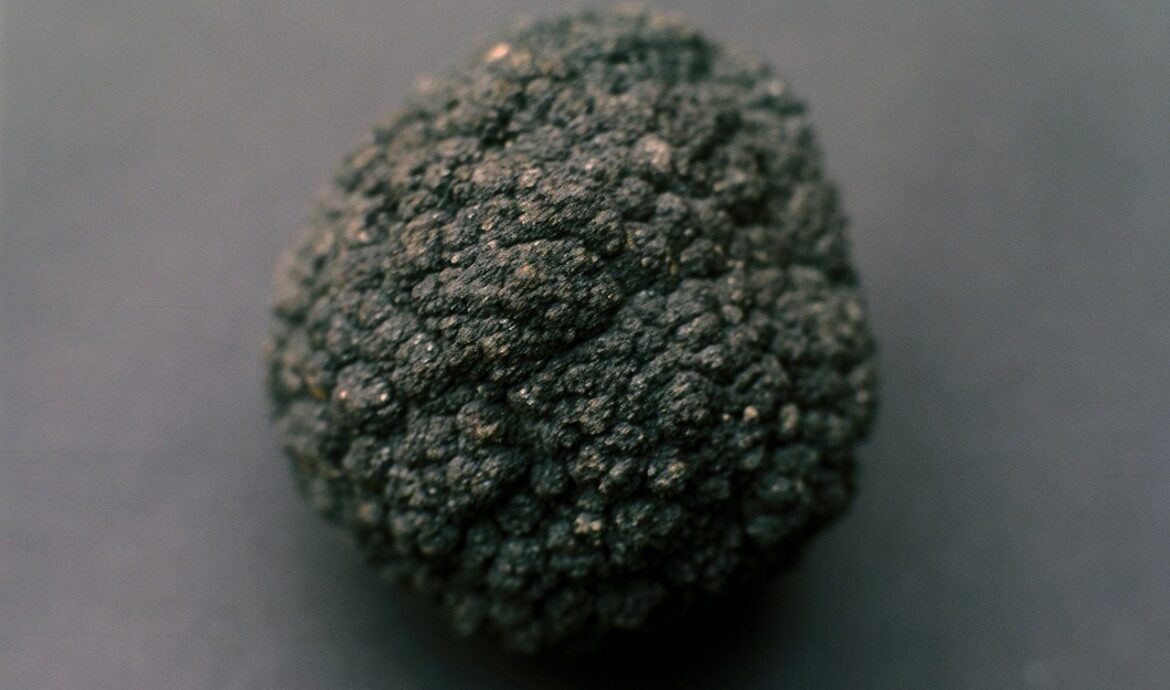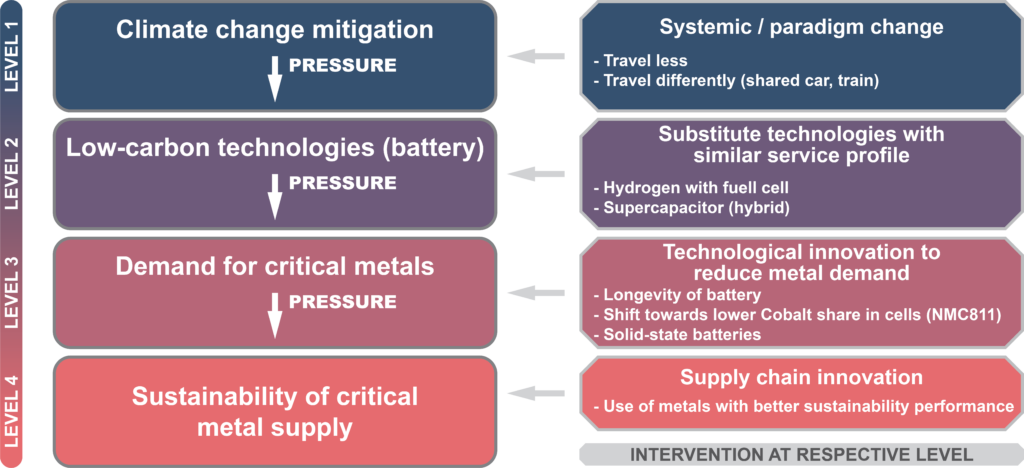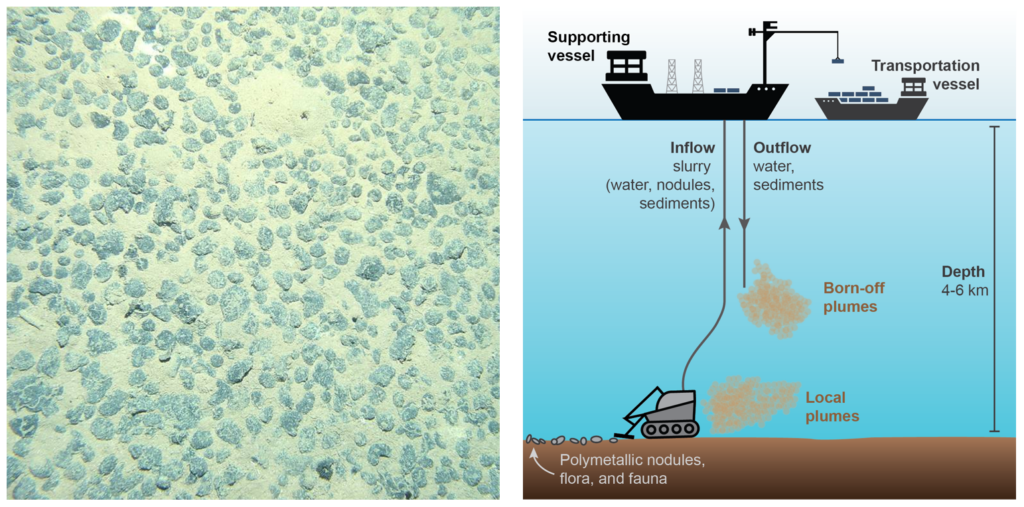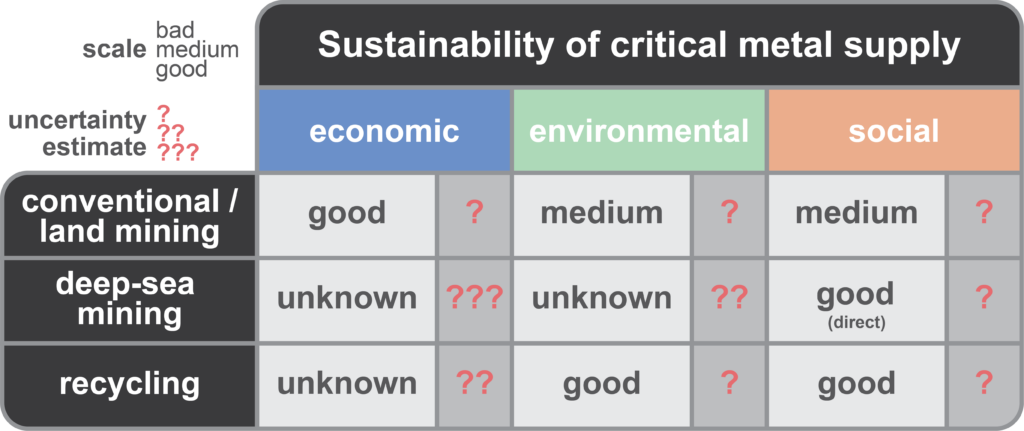
Deep-sea mining for our mobility transition: the quest for sustainable batteries
On 09.07.2021 by Leopold PeiselerLeopold Peiseler is a doctoral researcher at the Energy and Technology Policy Group and the Materials and Device Engineering Group. He is also a member of the Institute of Science Technology and Policy, contributing to the SWISSCHAINS research incubator. His work is focused on how carbon emissions of Lithium-ion batteries can be reduced.
Climate change is pressing and we need fast decarbonisation of all aspects of life. As a multi-purpose technology, batteries play a central role in the reduction of carbon emissions. However, the current supply chain of Lithium-ion batteries is often associated with environmental and social burdens. Thus, some voices are advocating alternative mining: potato-sized rocks, rich in critical metals. The catch? These rocks lie 4000-6000m deep in the oceans and we have little to no idea about this niche ecosystem or the severity of impacts on it if mining were to occur.
The transport sector is the single largest CO2 emitting sector in Switzerland – and as opposed to every other sector in the country, it did not decrease but instead increase its emissions since 1990. In fact, Switzerland is really only one example as this pattern is shown by many countries. This is a model example of the notorious rebound effect: engineering efficiency gains are undermined by the rising demand in transportation services (primarily cars).
Complex problems like this can be addressed at different levels – see Figure 1. Systemic changes at Level 1 are arguably the most powerful but also inherently hard to implement. Interventions at this level are critical to combat climate change but are not the focus of this article – interested readers may enjoy this report. Leaving system-level approaches aside, it is evident that the decarbonisation of transport requires low-carbon technologies (Level 2 in Figure 1). In this context, energy storage solutions are a particular challenge because only a few are appropriate for mobile applications.
Lithium-Ion batteries (LIB) are one of the appropriate solutions: they are a multi-purpose technology with many low-carbon applications spanning from stationary storage over consumer electronics to mobile applications, such as in electric vehicles. Depending on the desired performance characteristics, LIBs require different metals. Generally speaking, a Lithium-ion battery contains Lithium (Li), Graphite (C), Aluminium (Al), Copper (Cu) and a mixture (or only one) of Nickel (Ni), Manganese (Mn), Cobalt (Co) or Iron (Fe).
Fortunately, in some sense, the adoption of low-carbon solutions will see unprecedented growth: by 2030, the battery demand alone is estimated to grow between mind-boggling 600%¹ and 1300%. The anticipated increase is so substantial that even with technological innovation, mining capacities of the above mentioned metals inevitably require expansion (Level 3 in Figure 1).

Figure 1: Framework visualising potential intervention levels
As a consequence, we must raise the question where the metals come from and, perhaps more importantly, under what circumstances they are sourced. This endeavour is best tackled by analysing the battery’s supply chain (Level 4 in Figure 1): a supply chain provides insights into the materials of a product and the activities performed to deliver those materials, from mineral extraction all the way to end-of-life treatment.
So what’s the problem?
The conventional supply chain of batteries is subject to harsh criticism, predominantly from a human rights perspective. In this context, it is necessary to break down ‘sustainability’ into its different dimensions. One classic approach clusters sustainability into economic, environmental, and social aspects. Beyond this differentiation, each metal comes with its own sustainability challenges as the metals required for LIB are globally unevenly distributed and extracted using a variety of different processes. Therefore, a sustainability assessment of each metal is imperative.
Most prominently, lithium mining is often associated with unsustainable water consumption in water-stressed regions (e.g., Chile, ~38% of global production), Nickel extraction with deforestation and biodiversity loss in Indonesia and the Philippines (18% and 17% of global production, respectively), and Cobalt with hefty human rights violations including child labour in artisanal mining operations (Democratic Republic of Congo, at 57% GP). The latter is also discussed in greater detail in Martin Beuse’s blog post.
With some light shed on the importance of critical metal mining and the issues around current mining methods, let’s now dive into a nascent mining technique: deep-sea mining.
Deep and salty relief on the horizon?
On the ground of our oceans, there are a myriad of potato-sized rocks (aka nodules) – see Figure 2a. These nodules are particularly plentiful in the Clarion–Clipperton Zone (CCZ), an area between Hawaii and Mexico of the size of the European Union. The nodules formed over an inconceivably long time, only growing a few millimetres per million years. What is making these peculiar formations so appealing is their metal composition and abundance:
- One nodule consists of a high concentration of many critical metals (Mn, Ni, Cu, Co) – not just one or two (usually the case for land ores).
- The ore grade (the percentage of metals per nodule) is typically higher than current terrestrial mineral deposits of the same metals.
- The currently known amount of Nickel and Cobalt contained in the deep-sea nodules is estimated to exceed current terrestrial reserves by 3 and 5, respectively.
Figure 2b outlines what deep-sea mining could look like. On the ground, machines would trawl the abyssal plain, separating the nodules from the sediments (you can think of this machine as an over-dimensioned vacuum cleaner). Next, the slurry would get pumped up to a mining support vessel that separates the nodules from residual sediments. Ultimately, the water, together with the remaining sediments, would get pumped back down into the ocean.

Figure 2: (a) Picture of the seabed with potato-sized polymetallic nodules (Source); (b) Schematic of a potential deep-sea mining operation (figure inspired by Hein et al. 2020)
Contrary to what one would think about a cold, pitch dark, 4000-6000m (!) deep environment, this area is surprisingly biodiverse and hosts a large number of unique flora and fauna organisms. The nodule extraction results in a direct loss of habitat and environmental alterations such as sediment compaction, local and born-off plumes, and unnatural (anthropogenically caused) noises. It seems clear that the extraction operation would severely disturb and quite likely irreversibly harm marine life in the deep. Moreover, the deep sea, its flora and fauna, and the potential mining impacts remain poorly understood.
This translates into problematic uncertainties when comparing deep-sea mining with other metal sources. Figure 3 qualitatively compares the three high-level sustainability dimensions of aggregated critical metals from conventional, deep-sea, and recycling sources.

Figure 3: Sustainability matrix comparing metal from conventional, deep-sea and recycling sources.
The governance of the deep
Following a 1994 UN agreement, the deep sea is governed by the International Seabed Authority (ISA). The ISA controls the mineral exploration licensing and has divided the above-mentioned area between Hawaii and Mexico, into environmental protection and country-specific research regions. Following exploration permits, the ISA will also provide mining permits in the future. It is planned to partially redistribute profits created by companies (of most likely wealthier nations) to non-participating countries according to an ISA royalty scheme.
If designed and governed adequately, these governance characteristics can have a noticeable advantage over terrestrial mining, where only a few countries control the mining of some critical resources. However, the ISA is not without controversy. Some stakeholders claim that the ISA has a conflict of interest since it is responsible for both the area’s environmental protection and economic exploitation.
Take-away
Deep-sea mining is a polarising topic. While conventional Cobalt mining is often linked to child labour, mining in the ocean evokes images of pristine marine ecosystems destroyed by underwater bulldozers. Comparing different mining technologies is a complex endeavour and, unfortunately, does not have a simple solution. Recycling can alleviate the stress on virgin supplies – but a sufficient quantity of metals must enter the cycle in the first place. Regarding the extraction of these metals, the question is not how bad or good deep-sea mining is but how much better or worse it is compared to current mining practices.
Given the significant uncertainty tied to deep-sea mining, no legitimate comparison can be drawn at this point – further research is required before mining permits are granted. In the meantime, every effort should be made to make terrestrial supply chains more sustainable.
Cover photo by Wikipedia CC BY-SA 3.0
¹Bernhart, W. Lithium-Ion batteries: New Business Models Emerging. Roland Berger (2020).
Keep up with the Energy Blog @ ETH Zurich on Twitter @eth_energy_blog.
Suggested citation: Peiseler, Leopold “Deep-sea mining for our mobility transition: the quest for sustainable batteries”, Energy Blog @ ETH Zurich, ETH Zurich, July 7, 2021, https://blogt.ethz.ch/energy/deep-sea-mining/
If you are part of ETH Zurich, we invite you to contribute with your findings and your opinions to make this space a dynamic and relevant outlet for energy insights and debates. Find out how you can contribute and contact the editorial team here to pitch an article idea!


No cobalt mining means no child labor, but also no work at all and no income at all from mining. An alternative could be cobalt mining without precarious working conditions. But most people don’t believe in this alternative.
No deep-sea mining means avoiding disrupting life on the seabed and avoiding polluting the water, but it also means more land mining. An alternative could be localized and temporary deep-sea mining with subsequent supervised restoration of the seabed.
In recent years, in order to ensure responsible sourcing in the mining industry, blockchain technology is considered to improve the transparency of the cobalt supply chain. This technology may better monitor the mining behaviours of the upstream companies, such as mining companies, smelters and refiners. But the acceptance of this new technology applied in the battery supply chain still needs more studies (e.g., human-technology interaction, regulations, financial advantages and ethical constraints). Dr Leopold Peiseler has any thoughts about this application?
Thanks so much for your comment! While not discussed in this article, supply chain transparency is a hot topic in the upstream material sector. Automotive companies are often very, very far away from the companies who operate in the extraction sector (in an organisational sense, but also in many more). As of now, it is close to impossible to adequately list where and under what circumstances metals in your product were sourced. One reason for this is that the way from ore/brine to usable metal is complex and includes multiple chemical conversion processes for which a multitude of different suppliers are tapped. Deploying blockchain technology sounds promising – although blockchain is really only the IT-part of the puzzle (and there are more IT solutions to this end). There are a number of projects going on in this realm. But as you correctly pointed out, we face an entire array of barriers which must be overcome – spanning from trustful relations on the ground to a common set of rules and reporting mechanisms. I am excited to see what solutions will emerge in the future.